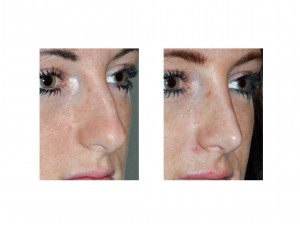
In the December 2014 Online First Edition of the journal JAMA Facial Plastic Surgery, an article was published entitled ‘Microbiology and Antibiotic Prophylaxis in Rhinoplasty. A Review of 363 Consecutive Cases’. In this paper, a retrospective review was done of a consecutive series of adult rhinoplasty/septorhinoplasty patients (77% women, 23% men with an average age of 36 years old, 48% primary rhinoplasty and 52% revision rhinoplasty) who had nasal swab testing before surgery. The overall infection rate in this series was 3%. Fecal coliforms was responsible for nearly half of the infections while staph aureus accounted for one-third. (including one case of MRSA)
Preoperative nasal cultures showed 78% had normal flora, 11% had Staph Aureus and 0.3% has MRSA. In less than 10% of the preoperative swabs was fecal coliforms identified. (e.g., E Coli) No specific variables such as age, smoking, contraceptive use or seasonal allergies were associated with a change in the nasal flora or the infections seen. One interesting finding was that patients with active acne had an increased incidence of being colonized with fecal coliforms. Also patients with diabetes had an increased colonization rate with Staph Aureus.
Every rhinoplasty surgery that I do gets antibiotics right before surgery by IV and then an oral course afterwards for five days. The antibiotic given is almost always the cephalosporin Kefzol (IV) and Kelfex (oral) unless one has a strong Penicillin allergy history. It is one of the most commonly prescribed antibiotics being a first generation cephalosporin and is useful against gram-positive bacteria and some gram-negative bacteria. It is widely used for such bacterial related problems such as strep throat, otitis media, pneumonia, urinary tract infections and for most skin infections. It is not effective against MRSA infections.
Numerous studies have shown that Kefzol/Kelfex provides sufficient bacterial coverage for septoplasty and rhinoplasty surgery. But in patients that may be at higher risk for bacterial contamination not covered by this first generation cephalosporin (active acne, diabetics or risk of MRSA)) the antibiotic regimen may be changed to Septra or Clindamycin which have offers broader coverage for these organisms.
Dr. Barry Eppley
Indianapolis, Indiana


